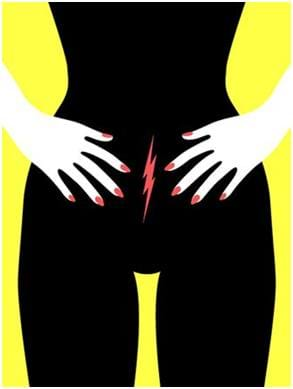March is the month to raise awareness on endometriosis

With Endometriosis Awareness Month in March coming up I thought it was timely to post to The Fix Program blog about how hands on therapy such as women's health physiotherapy can go a long way in helping endometriosis sufferers recover. Endometriosis is characterised by pain - period pain, abdominal & pelvic pain, pain with urination and with bowel movements, and pain with sex.
When women and younger girls suffer from endometriosis, they often spend a lot of time curled up in bed during period times, and often outside of period time too. All of those cramps, spasms, inflammation and pain make the tissues in the abdominal, pelvic and back area really tight. There is also a build up of scar tissue from the endometriosis or from the surgeries to remove endometriosis. This tightness in the muscles and connective tissue (fascia) in the area can then cause further pain. The pain cycle begins, going round and round in a vicious circle of increasing pain, tightness and inflammation.
I didn't realise that physios can help with endometriosis.
Physios are thought to only treat sports injuries or back pain. Little is known in the general arena of medicine and the general public about the wonderful role women's health specialised physiotherapists can play in changing these women's lives.
I'm a big fan of manual therapy and myofascial massage in this area to release scar tissue, adhesions, spasms, fascial and muscle tightness, and to restore the correct alignment of the bones, soft tissues and the pelvic and abdominal organs.
Sometimes the pelvic bones and joints are not in a neutral or appropriate alignment and this can further affect the muscles and fascia in the lower back, pelvic and hip regions. This can usually happen after surgery as often the endometriosis or scar tissue can be more one-sided within the pelvic organs. When surgery is done to remove this, one side of the pelvic tissues can scar and tighten up more and pull the joints out of alignment.
At The Fix Program we treat pelvic dysfunctions such as is seen with endometriosis with myofascial massage, muscle energy techniques and exercise to restore the pelvis, hip and spine joints back to a good neutral alignment. Often women with endometriosis have been told they have sacro-iliac joint dysfunctions in the pelvic joints, so an integrative approach of external and internal physiotherapy techniques is important for optimal results.
Endometriosis severely impacts the pelvic floor, and more often than not, women who suffer from endometriosis also suffer from a hypertonic, overactive or tight pelvic floor. If the pelvic floor muscles and fascia are tight, then they are often also very painful, leading to pain with sex. They can also make period pain worse because when the uterus contracts to expel blood, the pelvic floor muscle and fascia system will be contracting too (it's like trying to walk with a sprained ankle). This is why a lot of women with period pain also experience vaginal pain during their periods.
What can I expect after seeing a women's health physiotherapist for me endometriosis?
Almost every woman who walks into The Fix Program with endometriosis often has tightness or trigger points in her pelvic floor muscles, so a lot of the treatment she would have would involve internal vaginal muscle releases. Within 3 months of treatment internally and externally ( the outer muscles of the hip, buttocks, spine and abdomen), she will report less pelvic and sexual pain, better bladder and bowel control, regular bowel emptying, better digestion, and best of all, less period pain.
Periods can also become shorter, more regular, with less spotting before and after periods. Part of the reason for this is because the uterus is now aligned 'neutrally' from all the muscle and fascial release work around it, rather than tipping forwards or sideways. If the uterus isn't positioned 'neutral' or well within the pelvis, blood can stay back in the curves rather than flowing straight down and stay there until the next period, when it comes out as dark spotting.
Next month, I will explore a nutritional approach for the management of endometriosis. In the meantime support endometriosis awareness by attending events held by Endometriosis Australia and Worldwide EndoMarch.
http://www.endometriosisaustralia.org/
http://www.marchintoyellow.org.au/
http://www.endomarchaustralia.com.au/
http://www.luminosity.org.au/